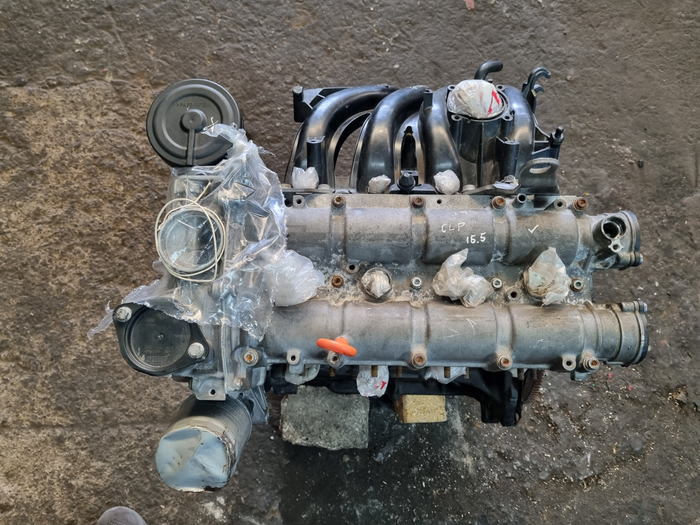Choose a cost-effective clp engine for industrial applications.
Choose a cost-effective clp engine for industrial applications.
Blog Article
How a Clp Engine Can Improve Effectiveness in Different Industries
The arrival of CLP engines notes a significant change in operational efficiency throughout various fields, driven by their ability to enhance fuel usage and reduce downtime. As organizations significantly focus on sustainability along with effectiveness, the function of CLP engines comes to be also a lot more vital.
Introduction of CLP Engines
CLP engines, or Continual Liquid Propellant engines, represent a substantial advancement in propulsion modern technology, specifically for area applications. These engines make use of a continuous feed system that permits the continual expulsion of propellant, causing enhanced performance and efficiency contrasted to traditional solid or hybrid propulsion systems. By preserving a constant flow of fluid propellant, CLP engines can attain more specific drive control, which is vital for navigating spacecraft in various objective scenarios.
The style of CLP engines integrates sophisticated products and cutting-edge fuel administration systems. clp engine. This results in lowered weight and increased dependability, essential elements for long-duration area goals. The constant procedure reduces the risk of combustion instability, a common difficulty in traditional rocket engines.

Benefits in Production
The manufacturing of Continual Liquid Propellant (CLP) engines provides several significant advantages that enhance both efficiency and cost-effectiveness. One of the primary advantages is the structured production procedure, which lowers the intricacy linked with typical propulsion systems. By using liquid propellant, makers can achieve higher precision in engine performance, resulting in maximized power output and lowered waste.
In addition, CLP engines promote a greater level of modularity, permitting for less complicated combination into numerous manufacturing lines. This adaptability can considerably reduce lead times and enhance general operational flexibility. Using CLP innovation likewise often tends to decrease the requirement for considerable maintenance due to less moving components, which translates into lowered downtime and functional prices.

Applications in Logistics
Leveraging Continual Fluid Propellant (CLP) engines in logistics provides substantial benefits in functional performance and dependability. These engines supply a robust service for different transport requirements, allowing the smooth activity of products throughout huge ranges. The inherent layout of CLP engines permits constant power outcome, which equates into smoother and more predictable transportation routines.
One of the essential applications of CLP engines in logistics is in sturdy products transportation, where they can drive both ground and aerial read the article automobiles. Their capability to preserve high performance under differing lots conditions makes certain that shipment timelines are met, therefore enhancing client fulfillment. Furthermore, CLP engines can be incorporated into automated logistics systems, facilitating real-time monitoring and optimizing route preparation.
Moreover, the sturdiness of CLP engines minimizes maintenance downtime, enabling logistics firms to maximize their functional capabilities. This is especially advantageous in warehousing procedures, where efficiency in taking care of and carrying goods is important. As logistics remains to advance, the integration of CLP engines stands for a forward-thinking method that not only boosts performance however additionally supports the market's expanding needs for integrity and rate.
Impact on Power Effectiveness
How do Continual Fluid Propellant (CLP) engines improve energy efficiency in transportation? CLP engines use a constant flow of fluid gas, enhancing burning processes and maintaining a secure drive outcome. This design decreases power losses connected with traditional combustion engines, where gas distribution can differ and cause ineffectiveness.
The continuous operation of CLP engines permits a more effective thermal cycle, causing greater specific impulse compared to traditional engines. clp engine. This converts to reduced fuel usage for the very same amount of job done, significantly reducing operational costs throughout various transport industries, including aviation and maritime sectors
In addition, the capacity of CLP engines to keep optimal performance under varying load problems reduces the demand for regular acceleration and slowdown, even more boosting gas effectiveness. Improved energy efficiency not just adds to cost savings yet also results in decrease greenhouse gas emissions, straightening with global sustainability objectives.
Future Trends and Innovations
Emerging advancements in Constant Liquid Propellant (CLP) engine modern technology guarantee to reinvent the landscape of transport performance and sustainability. As sectors pivot toward greener options, CLP engines stand at the center, integrating ingenious products and style methods that improve performance while decreasing ecological effect.
Among the most promising patterns is the fostering of crossbreed systems that integrate CLP engines with eco-friendly power sources. This harmony can optimize gas intake and lower discharges, lining up with global sustainability objectives. Developments in computational fluid characteristics (CFD) are facilitating the layout of more aerodynamically reliable engines, leading to minimized drag and enhanced top article fuel efficiency.
Additionally, the growth of read review smart surveillance systems is readied to boost operational performances. These systems utilize information analytics and IoT technology to maximize engine performance in real-time, guaranteeing that the engines operate within their most effective criteria.
As research remains to check out different propellant formulations-- such as biofuels and synthetic gas-- the future of CLP engines looks appealing. By using these advancements, markets can not just improve their efficiency yet likewise contribute substantially to a cleaner, much more sustainable future in transport.
Verdict
In conclusion, CLP engines represent a substantial development in effectiveness across multiple industries. Their capacity to enhance gas usage and minimize functional costs, incorporated with a continual feed system, improves power outcome and operational reliability. The integration of innovative materials and fewer moving parts reduces maintenance needs, while placement with sustainability goals placements CLP engines as a pivotal modern technology for the future. Proceeded innovation in this field promises further improvements in performance and ecological efficiency.
Report this page